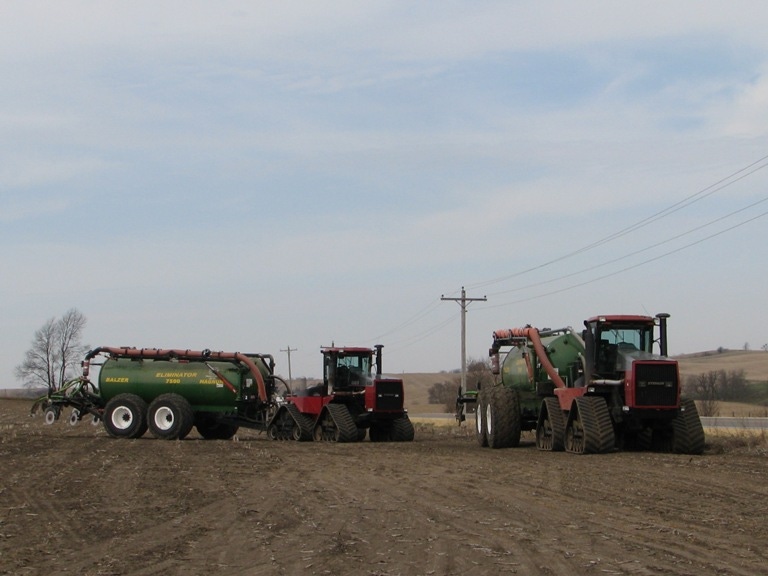Properly Calibrate Equipment
April 15, 2013

Calibration of manure and wastewater application equipment is essential. This is a good example of the linkage between “plan” and “performance.” How do you know what rate of manure application you attain if you haven’t tested and calibrated the equipment? Do you have records from prior seasons that show what rates were actually applied? Nutrient management plans that are part of a regulatory requirement call for calibration records. Know how to do a valid calibration and what data to record.
Applicator calibration tasks ranked by accuracy and difficulty stack up like this:
1. Dragline or towed-hose on multi-tool injector, with an electronic flow meter: It’s easy, but double-check accuracy: record the total amount of material applied by measuring the drop in the storage level; know the acreage where manure was applied. Do the math. The rate for that application is total gallons divided by total acres.
2. Tanker with injectors: Fairly easy and sufficiently accurate once you get some calibration experience. Width of spread is reliable because you can follow the last track of the injector. The other variables — tractor speed and flow rate from the tank — you have some control over. But double-check each job using the total material divided by total acres approach.
3. Tanker with liquid being broadcast: Fairly difficult and requires a disciplined driver to get an even spread.
4. Traveling gun applying lagoon liquid: More difficult and requires regular checks and a realistic target for uniformity across the track of the gun cart.
Happily, there is some latitude in the application rate calculations for nitrogen- or phosphorus-limited rates. If you can apply manure within plus or minus 10% of your goal, backed up by records, you are a pretty good operator. A simple analysis of all the uncertainties that go into the rate calculation — the manure sample, crop yield-based nutrient needs, applicator characteristics — quickly shows that it does not make sense to hold a manager to a closer tolerance than that. Records are still the key here. You should always strive to correct over- or under-applications the next time you’re in that field. The take-home message is simple — calibrate, calibrate, calibrate.
If you’re unsure of the calibration steps for your equipment, check with the manufacturer or see the Natural Resources Conservation System’s Ag Waste Management Field Handbook for suggestions.
You might also like:
You May Also Like



